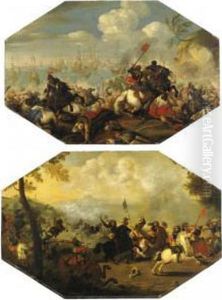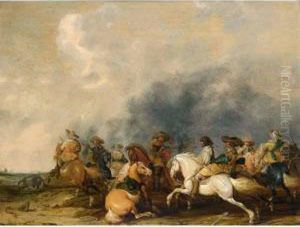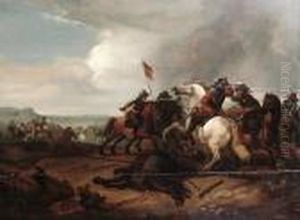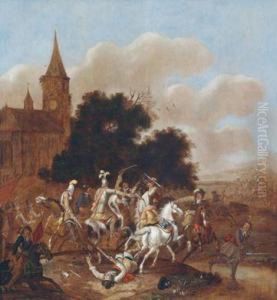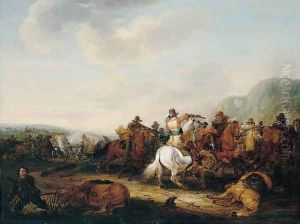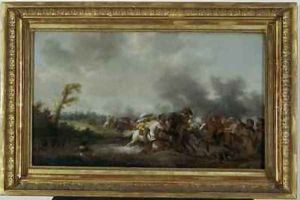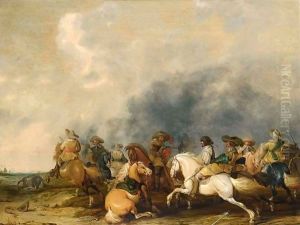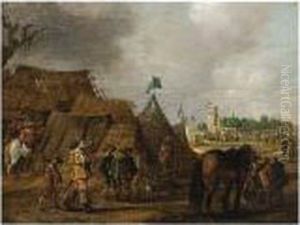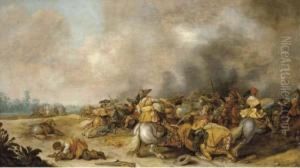Palamedes Palamedesz. (Stevaerts, Stevens) Paintings
Palamedes Palamedesz., also known as Palamedes Palamedesz. Stevaerts or Stevens, was a Dutch Golden Age painter born in Antwerp in 1607. He hailed from a family of artists; his father, Palamedes Palamedesz. the Elder, was also a painter, and his younger brother Anthonie was a notable battle scene painter. Palamedesz. moved to the Dutch Republic with his family during his childhood, where they became part of the vibrant artistic community.
Palamedesz.'s oeuvre primarily includes genre scenes, guardroom scenes, and military subjects, reflecting the influence of his brother Anthonie. However, he distinguished himself with his unique style and attention to detail. His works often depicted soldiers and cavaliers in interior settings, engaging in gambling, drinking, or resting, portrayed with a remarkable sense of realism and texture. His guardroom scenes are particularly noted for their elaborate depiction of armor and weaponry, showcasing his ability to render different materials with accuracy.
He was a member of the painters' guild in Delft for a time and was influenced by the works of other genre painters such as Dirck van Baburen and Hendrick ter Brugghen, who were proponents of the Utrecht Caravaggism movement. This influence is seen in Palamedesz.'s use of dramatic lighting and strong chiaroscuro effects, which add a sense of drama and depth to his compositions.
Despite his relatively short life, Palamedesz. left behind a considerable body of work. He died in Amsterdam in 1638, at the age of 31. His paintings are now housed in various museums and collections around the world, where they continue to be studied and admired for their contribution to the Dutch Golden Age of painting. Palamedesz.'s legacy is that of a skilled genre painter who captured the martial spirit and daily life of his era with finesse and a keen eye for detail.
